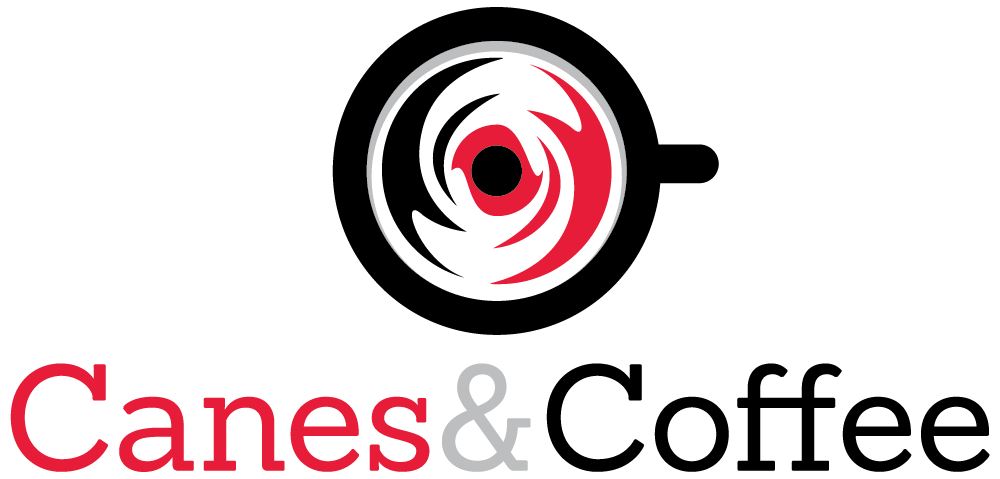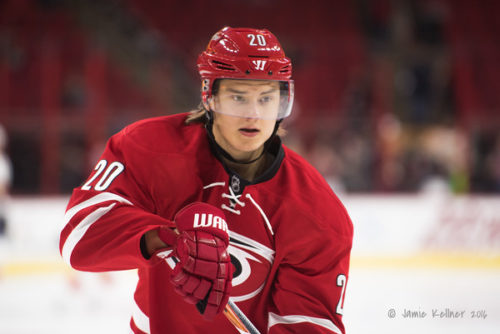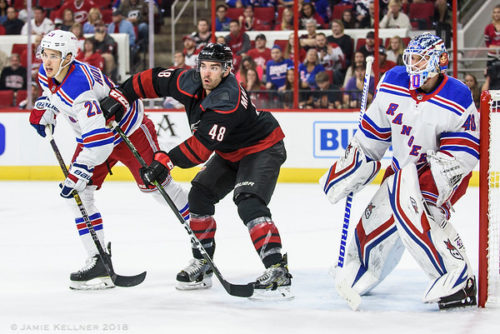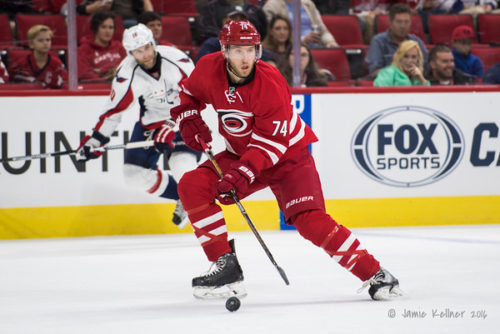Though the reasons for optimism continued to grow, in many ways the Carolina Hurricanes 2016-17 season followed a fairly typical pattern. The team struggled out of the gate and found itself in a hole standings-wise by the beginning of December. Then right about when it seemed to appropriate to just take a complete write off the entire season a couple things clicked and the team charted a course higher. The resurgence offered reason for hope, but the team never really did climb all the way back into the playoff chase. The season wrapped up with a second half that offered reason for optimism but a season in total that was not good in enough in a league where 16 of 30 (now 31) teams make the playoffs.
With the team gradually trending upward, young players maturing and Francis making a couple significant ‘win now’ moves over the summer, the 2017-18 season is not one for ‘sticking to the plan,’ ‘continuing to improve,’ ‘hoping to have a chance in March,’or similar.
It’s time.
It’s time for the Hurricanes to push back into the playoffs.
With some themes that were also in part 1 of my preview that came at it more from a player angle, here are three keys to making the playoffs for the 2017-18 season.
1) The goaltending must improve
The Hurricanes goaltending has been near the bottom of the league by many measures over the past few years. Winning in the NHL without a ton of Hart Trophy type players is difficult. Winning in the NHL without a ton of Hart Trophy type players while trying to overcome sub-par goaltending is nearly impossible.
This is not to say that Scott Darling needs to push up into the Vezina Trophy conversation (though that would obviously be welcome). Fortunately, the baseline is low enough that even league average goaltending could be good enough with other areas of the team also rising.
2) The team must find more scoring
If Darling plays well and the young defense takes another step up as it matures, the Hurricanes have the potential to win by playing playoff type hockey that stymies offense. But over the course of a long 82-game NHL season trying to grind out a bunch of 2-1 wins with no margin for error for the goalie or anyone else is taxing.
Better would be to find a few additional sources of offense and improve the team’s 2016-17 goal scoring total that ranked 20th our of 30 teams in the NHL in 2016-17.
Numerous options exist. Justin Williams adds another scorer to the mix, and while Marcus Kruger is not know for for his offensive productivity, he could still be a modest step up scoring-wise over Jay McClement. In addition, the returning roster is chock full of young players who theoretically have more to give on the score sheet. Sebastian Aho is only entering his second year in the NHL, and Elias Lindholm and Teuvo Teravainen both have draft pedigree and skill sets that seemingly reach higher than the depth scoring level that they reached in 2016-17.
I actually think the more subtle but potentially most powerful source of additional scoring could come from the maturation of the blue line. Jaccob Slavin and Brett Pesce first took care of details defensively which is exactly what one would want from young defensemen, but both started to show an ability to slow the game down with the puck on their sticks in the defensive zone at the tail end of the season. I continue to think that Noah Hanifin has some Joni Pitkanen in him that is ready to bust loose once he gets his feet fully under him defensively. Justin Faulk is underrated across the entire league for his ability to generate offense from the back end. And even the third pairing boasts two players who can skate and carry the puck.
Regardless of whether the back end surges and boosts scoring across the entire lineup, a couple young players do more or the increased scoring depth just adds up, it is difficult to finish in the top 16 in the NHL for a team whose scoring is more like 20th.
3) The future needs to be realized for the blue line
I have written a handful of times about the disconnect between the legitimate optimism for the future of the blue line and the reality of the now. Past Jaccob Slavin and Brett Pesce who were lights out in 2016-17 the rest of the Hurricanes defense was ‘meh’ at best for the totality of the 2016-17 season.
We are about two years deep into believing that the strength of the Hurricanes in the future would be its blue line. That future needs to be realized for the Hurricanes to take the next step up.
At a simple level, the defense needs to be solid three pairings deep and at least in the top 10 in the NHL (with a ceiling for higher).
Go Canes!




In listening to Justin Williams speak at Canes Corner the other night, one point he made was how the Canes defense drove the offensive opportunities for the forwards by getting the puck out quickly past the forecheck. He was very impressed by this D in doing so, which makes me think in many ways we were better than “meh” on the blue-line. This also links your points 2 and 3.
And from what I saw in preseason – and I know you have commented on it as well, Matt – Hanifin has really stepped up and is an upgrade from the Hanifin we saw last season. Fleury is an upgrade from Dahlbeck, and Fleury+TvR is an upgrade over Hanifin+Whoever last season. That suggests to me – and I have heard it from others – that this is one of the top defenses in the league going into this season. And going back to Williams point, that is going to generate more (and better) offensive opportunities.